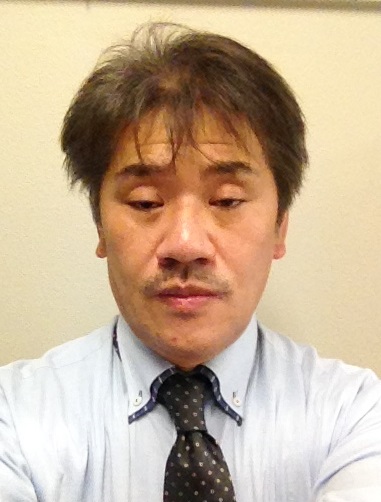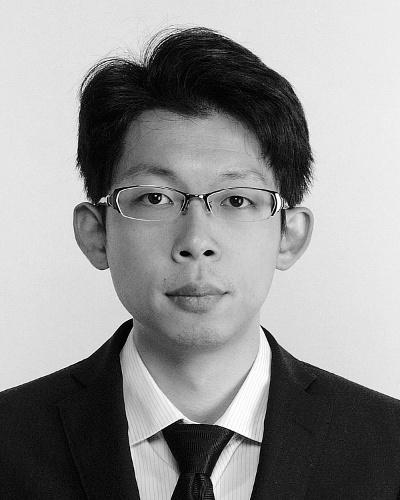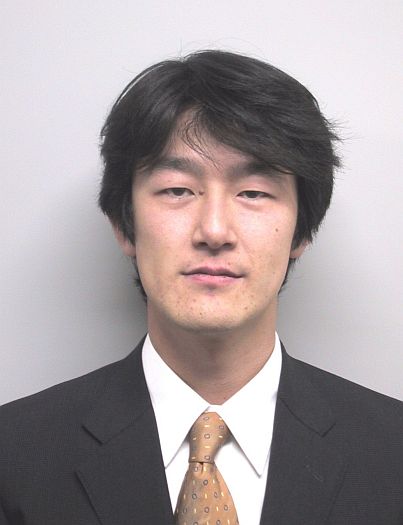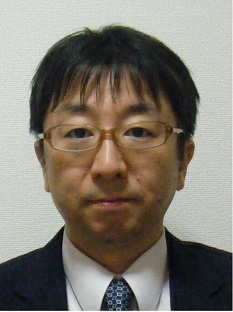|
 Keynote Lectures (under expanding!) Keynote Lectures (under expanding!)
|
|
[Title]
Consideration on Fundamental Performance Limitation of Analog Electronic
Circuits
Based on Uncertainty Principle
[Abstract]
This talk describes fundamental performance consideration of analog electronic
circuits; they often restrict the ultimate performance of the electronic
system. Their design tradeoff among performance indices as well as
theoretical foundation, based on uncertainty principle/relationship in
quantum mechanics /signal processing are discussed.
|
|
[Title]
Introduction of Center for Research on Adoption of NextGen Transportation
Systems of Gunma University
[Abstract]
Gunma university established the Center for Research on Adoption of NextGen
Transportation Systems (CRANTS), last year. The objective of the center is to
proceed research and development of automatic driving cars and systems, and
to adopt them to society. In this keynote, we introduce the structure and the
missions of the center.
|
|
[Title]
The e-JIKEI Network Camera: Abuse prevention of street camera network by
recording browsing-history
[Abstract]
A street camera network, in which many IP cameras are installed at a
high density, similar to street lights throughout a nation, will have a stronger
positive effect in suspect tracking and crime deterrence in the near future.
On the other hand, it will also have a stronger negative effect related to
the violation of privacy of ordinary citizens. In order to make such a
stronger surveillance camera system, which forcibly captures the images of
passersby for the public interest, be accepted as an essential social
infrastructure by a society, it is necessary for this camera system to make
ordinary citizens be convinced that it is used only for the public interest.
To realize this, a new concept, in which the abuse of a street camera network
is deterred by recording and disclosing browsing-history, is proposed. The
perspective on the street camera system in the near future is discussed.
[Reference]
Yusaku Fujii and Noriaki Yoshiura, "Will every streetlight have network cameras in the near
future?", SCIENCE, eLetters (21 October 2016) .
|
|
|

|
Takao Yamaguchi, Ph.D
Professor, Gunma University (Japan)
|
[Title]
FEA to Calculate Dynamic Responses for Complicated Systems Involving
Elastic/Viscoelastic Structures and Living Bodies with Reaction
[Abstract]
We proposed a fast finite element method to calculate dynamic responses
for complicated systems including elastic/viscoelastic structures and living
bodies with reaction.
An explicit expressions of modal loss
factor are derived by applying asymptotic expansion to complex eigenvalue
problem of the dynamics systems with dissipations Due to this method, we can
know modal couplings in damping of the dynamics systems. This method was
named as MSKE (Modal Strain and Kinetic Energy) Method. MSKE method is
extended for the systems having nonlinear restoring force with
linear/nonlinear hysteresis. The proposed method can be applied to compute
impact responses of soft structures. We extended this method as complex
nonlinear restoring force element to calculate impact responses of
interaction systems between alive human bodies and machines (e. g. robots and
vehicles). Dynamic responses can be computed for alive human bodies in
consideration of difference between contraction and relaxing condition of
muscle using complex coefficients for the nonlinear restoring force. Effects
of precaution, foresight and panic on the responses can be treated in the
computation when negative values are given for the imaginary parts of the
nonlinear restoring force element.
|
|
[Title]
Software Model Checking and Preventing software bugs
[Abstract]
Nowadays, many kinds of vehicles such as cars, buses, trains or airplanes are
controlled by software. Recently, self-driving system of cars have been
researched by many researchers and companies. Google car is an example of
self-driving cars. The self-driving cars are realized by software and
verification of software is important for security and safety of vehicles.
There are many researches for verification of software and preventing
software bugs. This talk gives the trends of software model checking and the
methods of preventing software bugs.
|
|
|

|
Nozomi Haga, Ph.D
Assistant Professor, Gunma University (Japan)
|
[Title]
Circuit Modeling of a Wireless Power Transfer System Using the Impedance
Expansion Method
[Abstract]
The impedance expansion method (IEM), which was previously proposed by the
authors, is a circuit-modeling technique for electrically-very-small devices.
This paper describes a circuit-modeling procedure for a wireless power
transfer system by the IEM. First, the modal currents of the coil are
obtained via eigenmode analysis, and it is shown that the behavior of the
system can accurately be approximated only by the fundamental mode. Then, an
equivalent-circuit model based only on the fundamental mode is proposed, and
it is shown that the topology of the circuit model corresponds directly to
the physical constitution of the system.
|
|
|

|
Seiji Hashimoto, Ph.D
Professor, Gunma University (Japan)
|
[Title]
Development of An Impedance Control-Based HIL Simulator for EPS Systems
[Abstract]
In recent years, an electric power steering (EPS) control system of vehicles
relating to the auto driving has been developed. The aim of this research is
to build a HIL simulator which can generate the self-aligning torque
precisely in accordance with the driving conditions. In this talk, the
construction of the HIL simulator and the realization of the self-aligning
torque based on the impedance control are presented.
|
|
|

|
Satoshi Hasegawa, Ph.D
Assistant Professor, Utsunomiya University (Japan)
|
[Title]
Holographic Shaping of Femtosecond Pulses for Advanced Laser Material
Processing
[Abstract]
Parallel femtosecond laser processing using a computer-generated hologram
displayed on a spatial light modulator, known as holographic femtosecond
laser processing, provides the advantages of high throughput and high
energy-use efficiency. Therefore, it has been widely used in many
applications, including laser material processing, two-photon polymerization,
two-photon microscopy, and optical manipulation of biological cells. In this
paper, we review the development of holographic femtosecond laser processing
over the past few years.
|
|
|

|
Mikiya Araki, Ph.D
Associate Professor, Gunma University (Japan)
|
[Title]
Jet Noise Reduction Technologies for High-Speed Aircrafts
[Abstract]
The Concorde was the first and the only commercial supersonic aircraft that
had a maximum speed of twice the sonic speed. It retired in 2003 due to the
slump in air travel, rising maintenance cost and its jet noise. Next
generationfs supersonic aircraft is under development in the US, Europe and
Japan. Jet noise reduction is the key for the development of such
supersonic engines. The takeoff and landing noise of commercial aircrafts is
strictly regulated by ICAO (International Civil Aviation Organization). The
acoustic intensity of jet noise is known to be proportional to the 8th power
of jet velocity. For subsonic aircrafts, jet noise reduction has been
achieved by reducing their jet velocity. On the contrary, for supersonic
vehicles, this strategy is not available because of the increase in the
frontal area and the decrease in the cruise velocity. Several strategies for
reducing the jet noise radiated from supersonic engines are introduced.
|
|
|

|
Akihiro Takita, Ph.D
Assistant Professor, Gunma University (Japan)
|
[Title]
The Levitation Mass Method -precision measurement method for dynamic
force-
[Abstract]
The Levitation Mass Method (LMM), a method for generating and measuring for
dynamic force, is reviewed. In the LMM, A rigid body with known mass is
levitated using an aerostatic bearing. The rigid body called gthe massh can
move with negligibly small friction. When the mass collides with a test
target, the motion of the mass changes according to the equation of motion, F
= ma, where F is a force acting on the mass, m is the mass of the rigid body
and a is the acceleration of the mass. m can be measured precisely by electric
balance. a also can be measured precisely by an optical interferometer.
Therefore, the force acting on the mass can be measure precisely. We can only
measure the Doppler frequency modulated by the motion of the mass. The
velocity, acceleration, position and force are calculated from the Doppler
frequency. Then, we can obtain strictly synchronized values of velocity,
acceleration, position and force. We have investigated a correction method of
dynamic error of force transducer, many kinds of material testers and a mass
measurement device for astronauts. These applications of the LMM and latest
results are reviewed.
|
|
|

|
Nobuaki Nakazawa, Ph.D
Associate Professor, Gunma University (Japan)
|
[Title]
Intuitive Interface for Operation of Page Tuner Machine
[Abstract]
In recent years, text description has shifted to electronic media from paper, and a digital book is becoming a familiar with us. While a digital book spreads, there are also many people who like the printed books.In the welfare field, page turner machine has been developed for the persons with physical disability. The existed page tuner machine is adapted to various size books and each page can be precisely turning over. As for the interface, a contact switch and joystick are usually used to operate the page tuner machine. However, the physical burden may give the user if these interfaces are used on the bed. Here we consider hands-free situation for user of page tuner machine. In this keynote, we will introduce the developed system based on gazing actions.
|
|
|










